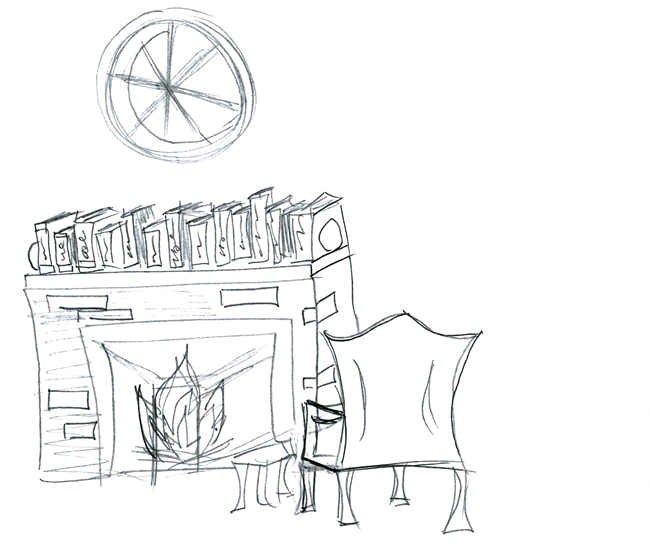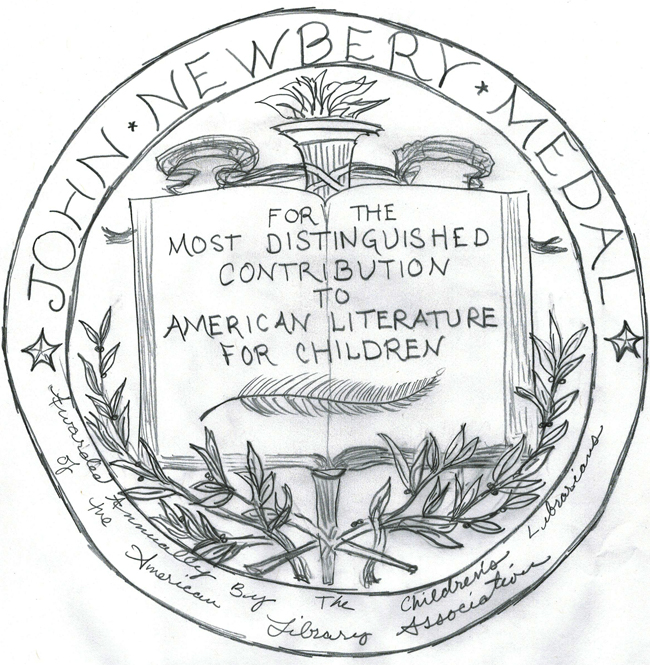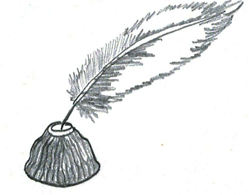Sometimes on long car rides or walks, Evan will indulge me and talk about our dream house. I say it is an indulgence because Evan likes to dream slightly practically, in a way that, with not too much difficulty, could become real. I like to dream extravagantly, in a way that will never most likely, become real. For example, in Evan’s version of our dream house it has a small library with a round window and a fireplace, the sort that CS Lewis or Tolkien might have had.
In my extravagant version, there is a great library—with ladders to reach high shelves along the walls of vaulted, airy ceilings. The space would be bright with great windows like that scene from Beauty and the Beast when the Beast shows Bell their dusty library, and she is deeply moved that he would share this treasure with her, and thus begins their romance. Only, my library would be slightly smaller than the Beast’s because my dream house is minimalist and well-laid out.
On the shelves of my great library, I always wanted to have all of the Newbery Award winner and honor books. I am not sure why this particular detail of having those nearly 400 books in my dream house seemed to represent extravagance. Imagine, just like Belle, the pure joy of going to a shelf with so many amazing books.
I think like most elementary children of the 1990s, my elementary school curriculum was filled with Newbery winners The Whipping Boy, The Witch of Blackbird Pond, Island of the Blue Dolphins, Julie of the Wolves, Sounder, Shiloh, Dicey’s Song, Missing May, Sarah Plan and Tall, The Giver, and Roll of Thunder Hear my Cry. My parents and other gift-giving relatives seemed to be drawn to them as well so that outside of school my childhood is filled with the words of A Wrinkle in Time, The Midwife’s Apprentice, and Mrs. Frisby and the Rats of NIMH.
But it seems that one of the great secrets of adulthood is to learn to use your public library well. So taking a leaf out of Evan’s dreams-that-are-prone-to-come-true, I’m embarking on reading through all the Newbery Winners! (If it goes well, I’ll swoop back and do the honors—a more Amy-styled dream, and thus one that I best not commit to now.) This means returning to blogging more than once a week, and committing to a project that’ll take the better part of two years. I wonder where I’ll be at the end of it?
The John Newbery Medal literary award has been given to one children’s book since 1922. It’s an award given out by the American Library Associations’ Association for Library Service to Children. So there are currently 93 award winners. The first was Henrik van Loon in 1922 for The Story of Mankind, and the 2014 winner is Kate DiCamillo’s Flora & Ulysses: The Illuminated Adventures. The award was named after a seventeenth century English printer, who printed a number of titles specifically for children. Of course, books for children had been printed and even copied out manually long before John Newbery, but he was a champion who deserves to be remembered by this prestigious award.
I want to read through these books both as a reader and as a writer. So each week I’m going to have second weekly post devoted to discussing that week’s Newbery winner. I’ll talk about:
1. What I liked about it.
2.) What I thought was interesting about that week’s work.
3.) What I felt some of its limitations were.
4.) Why I thought it was selected as a Newbery winner.
5.) How it is similar to other Newbery books.
6.) What it teaches me as a writer.
It’s just going to be one book a week, so feel free to read along, or pick one or two that interest you. The great thing about Newbery books is that they are pretty easy to get a copy of from your local library. I’m not the first person to blog through the Newbery winners; Mr. Schu@ Watch.Connect.Read and Colby Sharp @ SharpRead hosted a Newberry Challenge a few years ago, and Lorna @ NotforLunch and Julie @ Smiling Shelves are in the middle of their own Newbery Challenges. I’m delighted to join in the conversation about these books that have helped shape 20th and 21st century American children’s literature.
Next week, we’ll plunge in with Henrik van Loon’s lengthy, but readable, history book. From primordial ooze to World War I that had finished up only a few years before its 1922 publication, The Story of Mankind was awarded the first Newbery Award 92 years ago. I am hoping to be inspired and challenged by these books, and hopefully be able to give some great recommendations about new books for you to put on your own dream or real life library shelves.
What have your favorite Newbery Winners been? Do you have any Newbery winners on your to-read list?











One of my favorites is Newbery Honor, Catherine Called Birdy. It’s what inspired me to write historical fiction. When Karen Cushman blurbed my May, I shook and cried. An absolute pinnacle for me.
I think that Catherine Called Birdy is my very favorite Karen Cushman book, although I do love them all so much. I can imagine how cool it must have been to have her blurb your book (pint-size hero!), she’s so amazing. I think that Catherine Called Birdy was a book that contributed to my love of all things medieval and early modern. I loved the saints days and the suiters and the brother and her spunk. Seriously I want to read that again.
THIS IS SO AWESOME.
First off: I wonder how many young girls (and boys?) were swept away and permanently changed by that scene in Beauty and the Beast? I remember that moment. It took my breath away. WHAT A LIBRARY!!! What a dream come true! I always know I’ve found a kindred spirit when they mention that scene. YES.
Sadly, I have not read that many Newbery Award winning books. Wrinkle in Time was a big one in my childhood; and I’ve read the Giver a few times in adulthood because it’s just so haunting and beautiful. I would love to join in on your reading journey, though I’m afraid it would turn me into a terrible, neglectful mother, lol. I certainly couldn’t read a book a week. But I am SOOOOO excited at the prospect of doing this together with my daughter someday. Oh heaven!
Lastly: your illustrations! They’re amazing! Oh, it makes me itch to get back into drawing. Too many hobbies and dreams; not enough time!
Thanks Kathleen, You’ve definitely got enough on your plate right now! I’ll try to give you some good recommendations about which are the books to move up on your to-read list with Lydia. (Aside, I love your review of pictures books that you do. Oh, have you read her TWO COOL COWS by Toby Speed, illustrated by Barry Root? That’s one that I loved to read to my godson (boy I nannied in Maryland) when he was almost three, and I think I loved it more than he did.) I agree that library scene is so awesome!
I love your idea of reading and commenting on the Newberry Award books. I have read quite a few, but certainly not all, and I will try to read along with you. Reading and analyzing the best children’s literature is a great way to enhance your own writing.
I like your drawings a lot. I am in no way an artist, but “I know what I like”!
Anne
Thanks Grandma Anne! I’d love to hear your thoughts about the books. I think that one of the things that I’m going to struggle with is, as a historian, is knowing that there is a context to these books that came out in the 20s and 30s (well all the way up really) that I won’t really know about. And since I can’t make every book a big research project, I know I’ll be missing some of that. I’d love to hear your thoughts as the books begin to be ones that were out when you were little about how they compared to other books you read as a child. We miss you guys so much. I can’t wait to hear about the big trip. Love, Amy
Yay! Good luck with your challenge and thanks for the shout out. You may know this, but we’re using the hashtag #nerdbery over on Twitter to share thoughts and progress on The Newbery Challenge with other bookish folks who are part of The Nerdy Book Club. I’ve got Amos Fortune staring at me now!
Thanks Lorna! I saw the hashtag, but it’s good to know it’s still current. Thanks for the heads up. Goodluck with Amos Fortune! So far which has been the biggest chore to read and which one’s your favorite?